| Home |
| Acknowledgments |
| Conventions |
| Glossary |
| Maps |
| References |
| Links |
| Articles |
| Thumbnails |
| Species
list |
| Family |
| Next
species |
Additional Photos

side
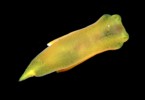
underside
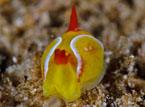
front
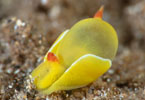
abnormal

regenerating?
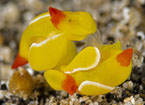
mating
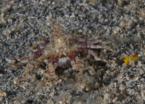
predation
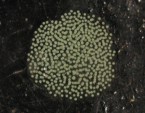
egg mass
_______________
GALLERY

Siphopteron quadrispinosum Gosliner, 1989
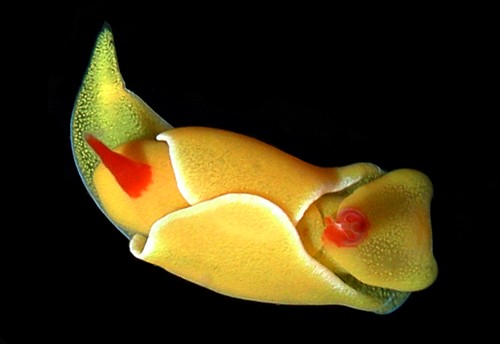
| Maximum size: 6 mm. Identification: This species has a bright yellow body. The parapodia are margined in white and both the siphon and flagellum are red. Rarely, there may be alight frosting of red pigment elsewhere on the body. Natural history: Siphopteron quadrispinosum is a common diurnal species found on open sand and in Halimeda kanaloana beds at depths of 6-27 m (20-90 ft). Numbers appear every year on open sand in early summer and then decrease until virtually none are seen during the fall, winter and spring. They swim readily when disturbed and lay a flattened, pale yellow egg mass. (Note 1) On July 12, 2013 Paul Okumura observed one being eaten by the the sand-dwelling anemone, Mesacmaea gilbertensis. (see photos). Distribution: Big Island, Maui, Oahu and Kauai. Taxonomic notes: It was first recorded in Hawaii from Kihei, Maui by Stan Jazwinski in Oct. 1978. Similar animals from the western Pacific are Siphopteron leah (Ong, et. al. 2017). Photo: CP: 5 mm: Airport Beach, Maui; June 1, 2008. Observations and comments: Note 1: On June 6, 2021 Pam Madden shot a video of an animal with its egg mass in the field. At the start it was resting on the mass in a slightly contracted posture while slowly flapping its parapodia up and down. After a few moments, it shifted position and crawled back and forth over the mass several times. Perhaps, it was still laying or had just finished in the first portion? (see photo) And, perhaps it was shaping the mass (or further securing it to the bottom) in the second portion? (see photo) |
| Thumbnails |
Species
list |
Family | Next species | Top |